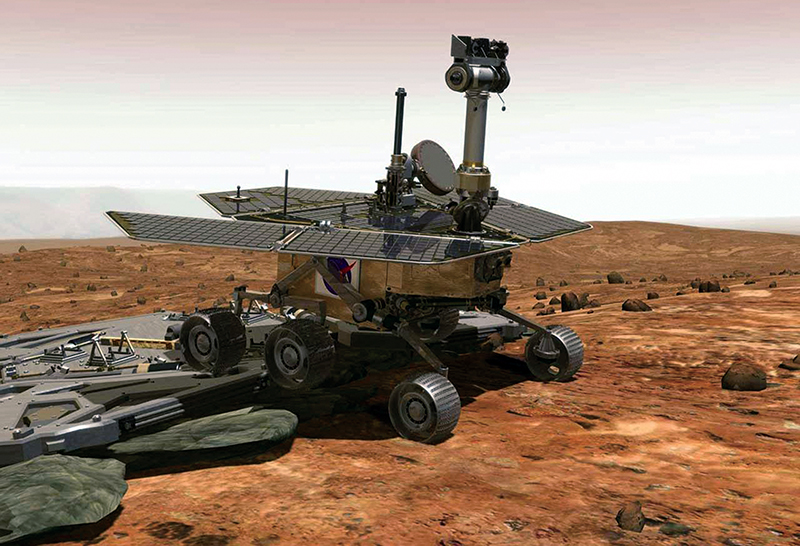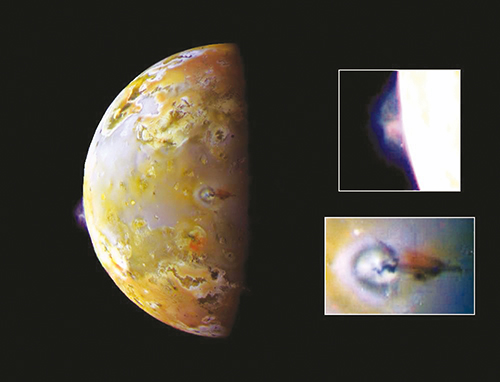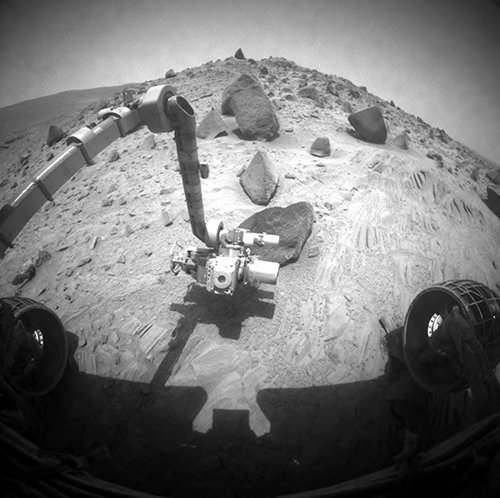
Software Analyzes Complex Systems in Real Time
Originating Technology/NASA Contribution
Expert system software programs, also known as knowledge-based systems, are computer programs that emulate the knowledge and analytical skills of one or more human experts, related to a specific subject. SHINE (Spacecraft Health Inference Engine) is one such program, a software inference engine (expert system) designed by NASA for the purpose of monitoring, analyzing, and diagnosing both real-time and non-real-time systems. It was developed to meet many of the Agency’s demanding and rigorous artificial intelligence goals for current and future needs.
NASA developed the sophisticated and reusable software based on the experience and requirements of its Jet Propulsion Laboratory’s (JPL) Artificial Intelligence Research Group in developing expert systems for space flight operations—specifically, the diagnosis of spacecraft health. It was designed to be efficient enough to operate in demanding real time and in limited hardware environments, and to be utilized by non-expert systems applications written in conventional programming languages.
The technology is currently used in several ongoing NASA applications, including the Mars Exploration Rovers and the Spacecraft Health Automatic Reasoning Pilot (SHARP) program for the diagnosis of telecommunication anomalies during the Neptune Voyager Encounter. It is also finding applications outside of the Space Agency.
Partnership
VIASPACE Inc., of Pasadena, California, a company dedicated to the commercialization of NASA and U.S. Department of Defense technologies, licensed the JPL-developed SHINE software from Caltech, which operates the laboratory for NASA. The company has an exclusive, worldwide license from Caltech to commercialize SHINE technology for most major applications, including industrial, diagnostics/prognostics, sensor fusion, and homeland defense.
In January 2007, the company was awarded a prestigious NASA Space Act Award, which is given for significant scientific and technical contribution and provides recognition for those inventions and other scientific and technical contributions that have helped to achieve the Agency’s aeronautical, technology transfer, and space goals.
Debbie Wolfenbarger, at JPL’s Innovative Partnerships Program office, says of the partnership, “It is exciting to see a technology with such a rich history of being utilized in NASA missions make the leap to the commercial sector. Its potential in commercial applications such as diagnostics/prognostics and homeland defense applications will directly benefit the public and is an excellent demonstration of the positive effects resulting from licensing NASA technology.”
Product Outcome
SHINE has been successfully applied to over a dozen applications both throughout NASA and within the commercial sector. It has significantly impacted operations cost, reliability, and safety in eight NASA deep space missions that include Voyager, Galileo, Magellan, and the Extreme Ultraviolet Explorer (EUVE).
SHINE has been used in the NASA Deep Space Network for diagnosing anomalies. It operates in a real-time environment, interfacing with in excess of 40 different legacy systems generating decisions and recommendations for control of the telecommunication systems. It has been employed by Ames Research Center as part of the Exploration Technology Development Program for onboard monitoring of flight system hardware and software with recovery. Johnson Space Center’s Space Operations Management Office has used the software for technology transfer and experiments on robotics for crewed space flight. Marshall Space Flight Center has used SHINE to conduct tests and evaluation experiments to support fault monitoring and abort system design for the Ares I.
JPL has also used the software both on its Engineering Analysis Subsystem Environment program, to operate a large number of spacecraft simultaneously through shared resources and automation, and in its EUVE, a NASA explorer-class satellite mission which employed SHINE to accomplish a labor reduction system, from three to one shift reductions through the use of artificial intelligence. On the Galileo mission, en route to Jupiter and its moons, NASA used SHINE for diagnosing problems in the Power and Pyro Subsystem. The Magellan mission, en route to Venus, benefited from SHINE’s diagnosis of several telecommunication anomalies in the telecom subsystem.
As part of the Spacecraft Health Automatic Reasoning Pilot program, SHINE provided diagnosis of telecommunication anomalies during the Neptune Voyager encounter. This application prevented the possible loss of the entire mission for detecting a failing transponder long before it was possible for a human to notice and just 12 hours prior to the encounter.
As part of JPL’s X-33 Avionics Flight Experiment, SHINE was used as a Vehicle Health Manager.
It has also been used for several non-NASA aeronautics projects, including Lockheed Martin’s Joint Strike Fighter, which involved proprietary efforts using SHINE in conjunction with the JPL-developed Beacon-based Exception Analysis for Multimissions (BEAM) software for fault diagnosis. SHINE was also successfully applied to anomaly detection on the F-18 aircraft. It was delivered as part of the BEAM anomaly detection system and ran on flight hardware, where it performed real-time mode identification on two F-18 aircraft engines and was tested in the F-18 hardware-in-loop (Iron Bird) simulator and during actual flight tests.
The U.S. Navy has employed SHINE as part of its Naval Sea Systems Command Integrated Vehicle Health Management program, for its capability to rapidly determine combat readiness in crisis situations and prognostics of network health coupled with remediation.
In addition, it has been applied to medical applications for Welch Allyn Inc., Johnson & Johnson, ViaLogy LLC, and VIASPACE. The company has also added new software capabilities that significantly enhance the functionality, flexibility, and ease of use of the SHINE system. The VIASPACE Knowledge Base Editor enables users to accelerate the development of SHINE-based applications and demonstrate capabilities and features for potential new markets and applications.

Two sulfurous eruptions are visible on Jupiter’s volcanic moon Io in this color composite image from the robotic Galileo spacecraft that orbited Jupiter from 1995 to 2003. SHINE significantly decreased the operations cost for this mission, while increasing both reliability and safety.

SHINE has been applied to many NASA missions, including the Mars Exploration Rovers program.

The Mars Exploration Rover mission is part of NASA’s Mars Exploration Program, a long-term effort of robotic exploration of the Red Planet.













